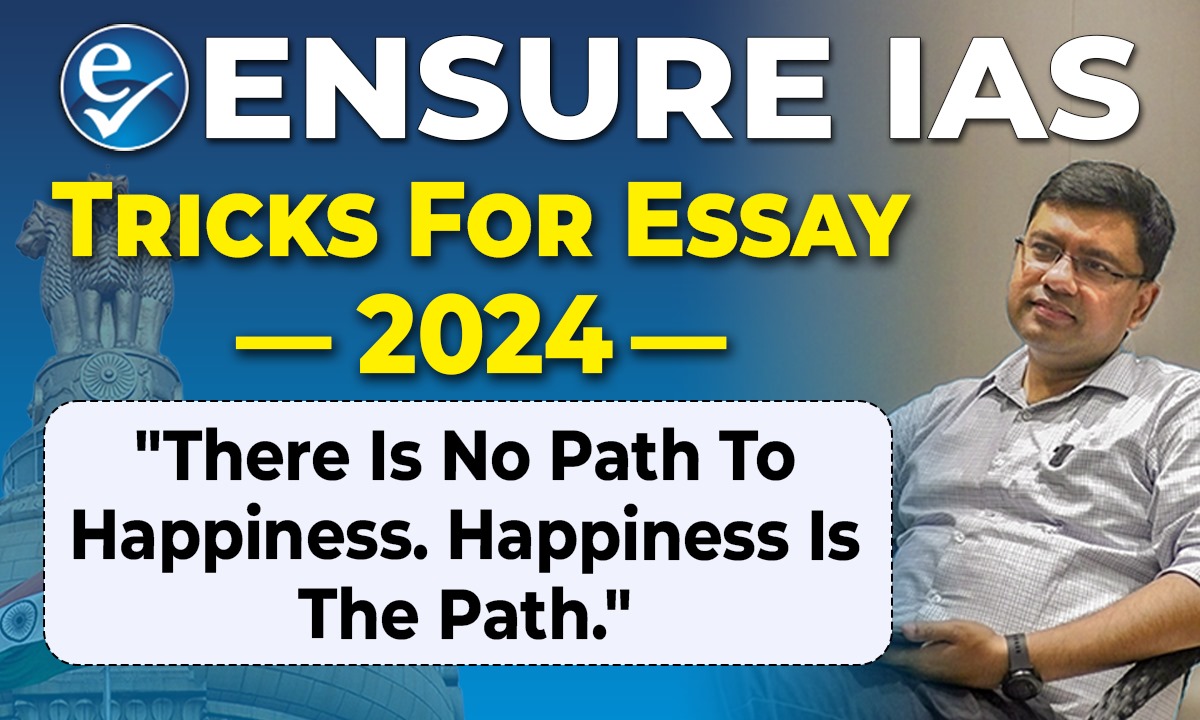- Courses
- GS Full Course 1 Year
- GS Full Course 2 Year
- GS Full Course 3 Year
- GS Full Course Till Selection
- Answer Alpha: Mains 2025 Mentorship
- MEP (Mains Enrichment Programme) Data, Facts
- Essay Target – 150+ Marks
- Online Program
- GS Recorded Course
- Polity
- Geography
- Economy
- Ancient, Medieval and Art & Culture AMAC
- Modern India, Post Independence & World History
- Environment
- Governance
- Science & Technology
- International Relations and Internal Security
- Disaster Management
- Ethics
- NCERT Current Affairs
- Indian Society and Social Issue
- NCERT- Science and Technology
- NCERT - Geography
- NCERT - Ancient History
- NCERT- World History
- NCERT Modern History
- CSAT
- 5 LAYERED ARJUNA Mentorship
- Public Administration Optional
- ABOUT US
- OUR TOPPERS
- TEST SERIES
- FREE STUDY MATERIAL
- VIDEOS
- CONTACT US
The Great Thing About Technology is That It Can Both Connect and Disconnect Us
The Great Thing About Technology is That It Can Both Connect and Disconnect Us
"Technology is a useful servant but a dangerous master." These words by Christian Lous Lange capture the paradox that defines our modern existence. As technology seeps into every aspect of our lives—from how we study and communicate to how we earn, socialize, and even think—it has become both a bridge and a barrier. While it promises connection, empowerment, and convenience, it also silently erodes attention, emotional depth, and human warmth. This dual nature is most evident in the lives of today’s youth, especially those preparing for demanding exams like the Civil Services.
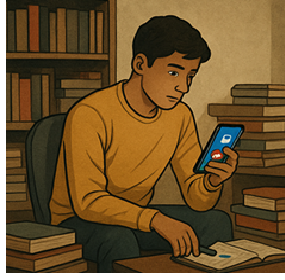 Consider the daily routine of a UPSC aspirant. With the help of Telegram groups, online coaching platforms, and YouTube channels, an aspirant in a remote village can now access the same resources as someone in a metropolitan city. Current affairs PDFs, quizzes, live classes, and discussions are all just a tap away. On the surface, it seems like a technological revolution has democratized learning. But beneath this promise lies a subtle trap. Many aspirants, in their effort to stay connected, gradually find themselves overwhelmed and mentally fragmented. The constant notifications, comparison with others’ progress, and the fear of missing out (FOMO) lead not to motivation but anxiety. They begin to lose their sense of self, their quiet focus, and even their connection with family or nature. Their minds are digitally connected, but emotionally disconnected.
Consider the daily routine of a UPSC aspirant. With the help of Telegram groups, online coaching platforms, and YouTube channels, an aspirant in a remote village can now access the same resources as someone in a metropolitan city. Current affairs PDFs, quizzes, live classes, and discussions are all just a tap away. On the surface, it seems like a technological revolution has democratized learning. But beneath this promise lies a subtle trap. Many aspirants, in their effort to stay connected, gradually find themselves overwhelmed and mentally fragmented. The constant notifications, comparison with others’ progress, and the fear of missing out (FOMO) lead not to motivation but anxiety. They begin to lose their sense of self, their quiet focus, and even their connection with family or nature. Their minds are digitally connected, but emotionally disconnected.
“Technology is best when it brings people together”
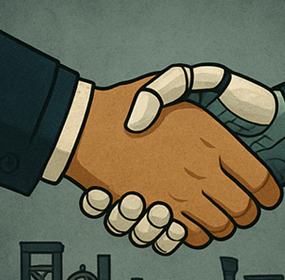
This is not an isolated case. The paradox of connection and disconnection runs deep through history. When the printing press was invented, it allowed for mass dissemination of knowledge and sparked intellectual revolutions like the Renaissance. But it also challenged established authorities, caused religious fractures, and disrupted societal harmony. Similarly, the Industrial Revolution transformed human productivity and mobility but led to urban alienation, child labor, and the breakdown of traditional communities. Every great technological leap has come with a shadow side. The digital era is no exception.
Today, technology surrounds us with tools of empowerment. The internet, smartphones, AI-based platforms, and cloud computing have reshaped education, communication, governance, and healthcare. Students can watch lectures on SWAYAM or Coursera, farmers receive real-time updates through SMS, and doctors can treat patients virtually through telemedicine. Digital India has brought services like Aadhaar, DigiLocker, and CoWIN into millions of homes, making governance faster and more accessible. Remote work platforms like Zoom, Slack, and Google Meet have changed how teams operate globally. Financial inclusion has reached the grassroots through UPI, Paytm, and Jan Dhan accounts, allowing even roadside vendors to go cashless.
Yet, connection does not always mean closeness. While we have more friends online, we have fewer deep conversations. While we share photos and status updates instantly, we forget the warmth of handwritten letters and face-to-face smiles. In many homes, people sit together but scroll silently on their devices. Children play games on screens, not in parks. Birthdays are marked by Instagram stories, not by shared meals and laughter. The emotional vocabulary of human life is being reduced to emojis, memes, and voice notes.
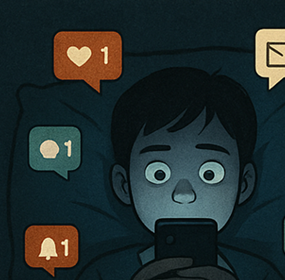
This digital overstimulation is also affecting mental health. Many young people feel burnt out, even without doing much physical work. The pressure to be constantly available, responsive, and updated is silently eating into their peace. The more we scroll, the less we reflect. Instead of deep, thoughtful reading, we consume short-form content that entertains but rarely enlightens. Attention spans are shrinking, while anxiety and loneliness are rising. The overuse of technology has not only disconnected us from others but also from ourselves.
Social media, once hailed as a space for free expression, is increasingly becoming a source of division. Algorithms show users content that aligns with their existing views, creating echo chambers. Over time, people stop engaging with opposing ideas and start believing that their version of reality is the only truth. This polarization is dangerous for democratic discourse. It breeds intolerance, misinformation, and in extreme cases, violence. Fake news spreads faster than truth, and political narratives become emotionally charged rather than rationally debated.
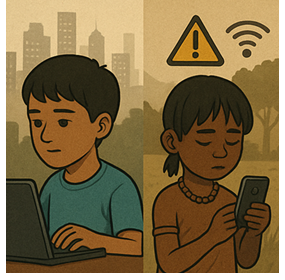
In the economic sphere too, while technology opens new doors, it also leaves many behind. Highly skilled individuals benefit from online freelancing platforms, digital startups, and global markets. But those without access to devices, stable internet, or digital literacy struggle to keep pace. The digital divide is real, especially in rural and tribal regions where technology often becomes a source of entertainment rather than empowerment. Even in cities, workers in low-skill jobs are increasingly being replaced by automation. This growing gap between the tech-savvy elite and the digitally excluded poor risks deepening social inequality.
Furthermore, technology’s effect on culture is equally profound. Traditional games, local arts, oral histories, and rituals are slowly fading away. Influencers and global content dominate the screens of young people, pulling them away from their roots. In this hyper-connected world, cultural disconnection is the quiet crisis.
Yet, it is important to remember that technology itself is not to blame. A knife can feed or wound—it depends on the hand that holds it. Similarly, technology is a tool, not a destiny. Whether it connects us or disconnects us depends on our intent, awareness, and usage. A Telegram group can be a focused resource hub or a distraction center—it all depends on how we use it. A smartphone can bring you a world of knowledge or an endless loop of scrolling—it depends on your discipline.
Therefore, the real challenge is not to reject technology, but to use it wisely and mindfully. Governments must invest not just in digital infrastructure, but also in digital literacy. Schools and parents must teach children how to manage screen time, recognize misinformation, and maintain real-world relationships. Civic awareness campaigns should highlight the importance of mental well-being in the digital age. Equally, individuals must consciously carve out time for offline joys—reading a book, taking a walk, speaking to elders, playing a physical sport, or simply sitting quietly with one’s thoughts.
In the end, the goal is balance. Let technology enhance our lives, not consume them. Let it build bridges, not walls. Let it offer speed, without sacrificing depth. Let it serve us, not master us. As we move into an increasingly automated and intelligent future, we must hold on to the timeless truth that while machines may run the world, it is only human beings who can give it meaning.
“Balance is not something you find; it’s something you create”
Mathematics is the Music of Reason" (MAINS 2024)
The Price of Procrastination: Fulfilling Today’s Duties for a Better Tomorrow

